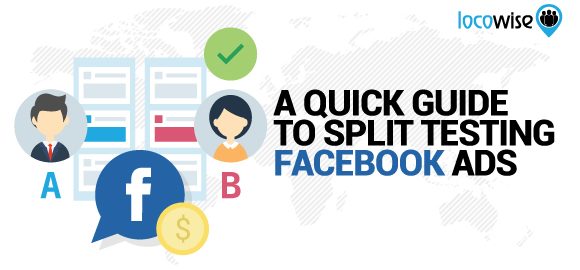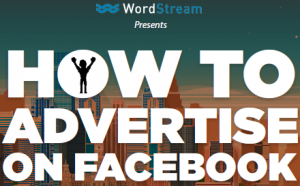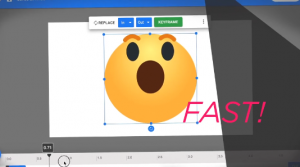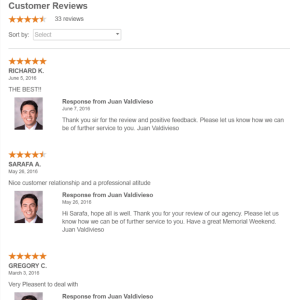We completely understand if you missed this one, and to be honest, not every brand has been allowed to take part. But split testing is out there for some Facebook business accounts, and this means that agencies working for brands can use ads in a more intelligent way.
Ads on Facebook are huge, and something that brands rely upon heavily. With great content and professional ad work, a brand can reach, engage and convert the right people.
Facebook has not given every business the keys to split testing, but it seems that the roll out is reaching more accounts right now. If you’re an agency and your client has been given split testing capability, how do you use it?

In 2016, Facebook accounted for nearly 70% of global social media ad spending. This means agencies have recognised the value and are working hard to benefit clients. Split testing is a natural ‘update’ for any agency that is focused on Facebook ads.
At its most basic level, split testing allows social media professionals to create and run ads for different segments within an audience. Previous to Facebook rolling out split testing though, it was nigh on impossible to avoid audiences seeing ads that were not meant for their segment. ‘Overlap’, where two audiences saw the same ad, was common. And if one segment sees an ad that is meant for another, it dilutes a brand’s overall impact.
How does split testing work on Facebook?
There are a number of features that are important to be aware of. Split testing on Facebook also has some features that are still on the conveyor belt. But if your client has been ‘chosen’, here are some tips that will help you get off to a great start.
Split testing is (at the moment) only available for three ad objectives. These are ‘lead generation’, ‘website conversions’ and ‘mobile app installs’. Things may change as Facebook becomes more confident in the feature, but for now, these three are the areas you can test in. Happily, the three areas are pretty much bread and butter for any agency, so there should be no real stress there.
Perhaps one of the biggest and most important aspects of ad testing is the number of ad sets you can work with. The whole point of split testing is to compare different ad types and therefore segment more effectively. Facebook has so far given the option of three ad sites, which gives a good amount of room to move and experiment.

If you are planning on using the audience variable for a split test, then you are limited to only using saved audiences. You can’t create an audience specifically for the purposes of a test. This Is not a problem of course, but it does obviously require that you plan carefully and organise a split test around your current segmentation.
The bugbear before all of this was underway was overlap. You could split test ads before, but you always ran the risk of creating an overlap, where two audiences would see the same ad. This was not a great situation, and one of the more welcome aspects of Facebook’s split testing is the fact that the audience variable is robust. If you split through audiences, the right people will see the right ad.
Being an agency, you will be aware of how long you want ads to run. But Facebook doesn’t set a time limit here anyway. You could run an ad for a long time or send out a quick targeted ad test to see what happens in just a few days. Facebook does offer recommendations here though (and if anyone knows an optimum split test duration, it’s the guys at Facebook). It is suggested that any test ads are run for no more than 14 days.
Facebook has said it only wants the most accurate results for tests, so only one variable can be changed at any one time. The ad test runs off that variable and no other. So testing on audience will simply provide you with two different audiences. Another variable may be placement, for example. One variable at a time is the way it rolls, though.

When the ad test is over, Facebook simply collates the results and sends you a handy little report so you can make a more informed decision next time. The ‘best’ ad set will be the one that gives you the lowest cost per outcome.
The variables that are currently available for split testing (and we say currently because we feel Facebook will continue to fine tune the tool) are audience, placement and delivery optimisation. There is a lot of breathing room here, and it allows brands to quickly see what is working and what isn’t.
Facebook does not allow different creative (the content and style) for split testing. It feels that the three variables are the best way to gain results that are useful. Obviously, this may change as the thing gains more momentum.
Agencies and brands can create split tests using Ad Manager or Power Editor within Facebook. The budget required for a robust split test is entirely decided by Facebook. It will notify you if your budget is too low to accommodate a split test.
Like any good split test, it’s best not to get involved when it is underway. You can mess about with a test when it is running, but Facebook strongly recommends that you don’t do this.
Facebook is a huge advertising platform, and this means that many brands are in danger of being overshadowed by bigger spending. But if you focus on split testing and doing it in an intelligent way, you can reach an audience with ads that actually bring results. Obviously, it’s important that you know your audience and the demographics involved. But a methodical, intelligent approach will bring you clear ROI.
We think this is one of the better aspects of Facebook and it’s intense level of control over advertising. If you’re eligible, play with it, and tweak your client’s ads until they have the biggest impact possible.
Digital & Social Articles on Business 2 Community(78)





